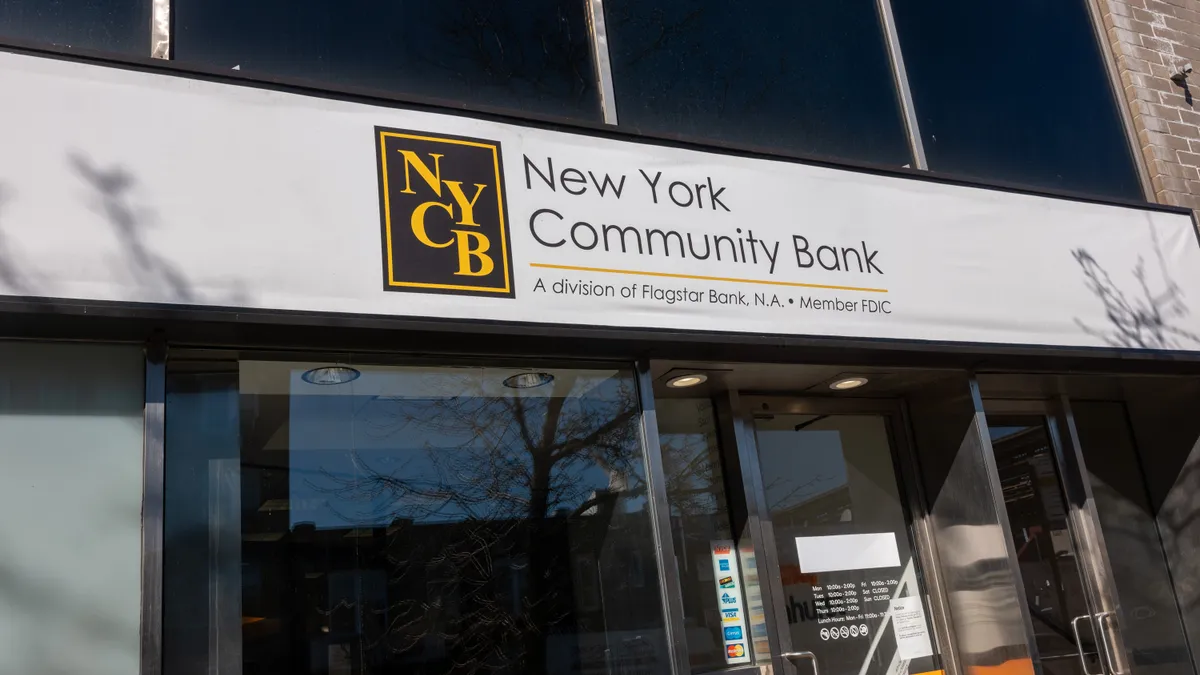New York Community Bank’s chief risk officer and chief audit officer left the bank in the months leading up to the surprise fourth-quarter loss that has sent the bank’s stock tumbling 48% in less than a week, according to comparisons of NYCB’s leadership web page via online archive.
Nicholas Munson, who led the bank’s risk effort, was listed among the bank’s executives in October 2023, but not in December.
“We can confirm that Nick Munson left the company in early 2024,” NYCB told the Financial Times in a Monday report. But the bank declined to say whether another executive had taken up the CRO post. The publication could not confirm why Munson left. Munson declined to comment to Bloomberg.
Likewise, NYCB’s most recent chief auditing officer, Meagan Belfinger, is listed on the October version of the bank’s website but not December’s. Belfinger also declined to comment to Bloomberg.
The departures, which the bank had not publicly announced, strike a parallel in that Silicon Valley Bank — which failed last year, spurring crisis of confidence in regional banks — had operated for nearly a year without a CRO ahead of its demise.
NYCB’s announcement last week that it would set aside $552 million to offset potential credit losses and cut the dividend it pays shareholders came amid pressure on the bank from the Office of the Comptroller of the Currency, Bloomberg reported Monday, citing people with direct knowledge of the matter.
Under a deal that allowed NYCB to acquire Flagstar in 2022, the OCC has the right — until late 2024 — to object to any dividends NYCB sets, according to regulatory filings.
A spokesperson for the OCC declined to comment to Bloomberg.
“We took decisive actions to build capital, reinforce our balance sheet, strengthen our risk management processes and better align us with the relevant bank peers,” NYCB CEO Thomas Cangemi said in a statement Wednesday that accompanied the bank’s earnings results.
Cangemi did not mention regulator input in the statement. He did, however, speak to heightened capital requirements that go along with growth. The bank has nearly doubled its assets in acquiring Flagstar and then purchasing a sizable portion of the remains of Signature Bank, which failed last year.
“While we began preparing to be a $100 billion bank almost immediately after closing the Flagstar acquisition, we crossed this important threshold sooner than anticipated as a result of the Signature transaction,” Cangemi said. “Alongside the integration of our three banks and in anticipation of our initial capital plan submission in April of this year, we have pivoted quickly and accelerated some necessary enhancements that come with being a $100 billion-plus Category IV bank.”
The bank saw a 48% jump in debts 30 to 89 days past due in the fourth quarter, compared with the previous three-month span, Bloomberg found.
NYCB’s fourth-quarter charge-offs stemmed mostly from two loans — both with ties to commercial real estate.
Federal Reserve Chair Jerome Powell last week said some smaller and regional banks have “concentrated exposures” in the sector that “are challenged.”
“It feels like a problem we’ll be working on for years,” Powell said, according to the Financial Times.
Office space, in particular, has taken a considerable hit in value since the start of the COVID-19 pandemic.
NYCB’s stock continued to fall after Powell’s comments.
Bank of America analysts said Monday they’d had “several conversations” with the NYCB management team in the days following the free-fall of the smaller bank’s stock price.
“While there is clearly pressure on the bank’s commercial real estate (CRE) borrowers, we believe 4Q marked a confluence of events that led to a worse than expected update,” BofA analysts wrote in a research note seen by the Financial Times.













